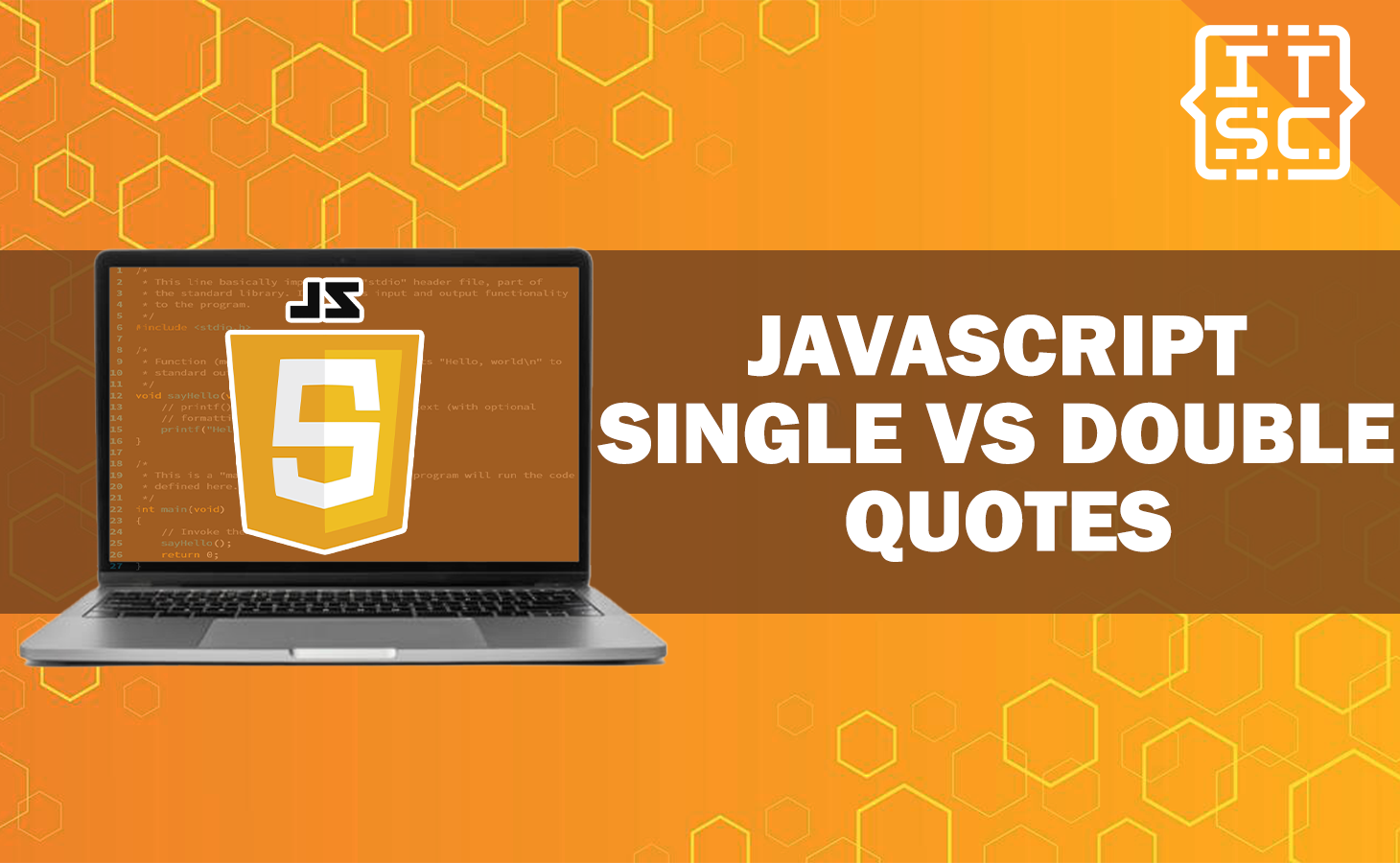Are you wondering which is better to use while working on your JavaScript code, either single quotes vs double quotes?
In this article, you’ll understand the difference between JavaScript single and double quotes.
Keep reading to learn when and how to use each type of quote effectively.
Let’s get started to explore the JavaScript single vs. double quotes to enhance your coding skills!
What is Single Quote and Double Quote in JavaScript?
The single quotes (‘ ‘) and double quotes (” “) in JavaScript are used to create string literals, which are sequences of characters that represent text.
JavaScript Single vs Double Quotes Difference
There is no difference between using single or double quotes, as both represent a string in the end.
The key distinction between using single and double quotation marks is whether you need to use a backslash () to escape the quote character: \’ for single quotes and \” for double quotes.
Use single quotes to escape single quotes and double quotes to escape double quotes.
For instance, a single quote (‘) should be escaped with \\’ within a single-quoted string, while a double quote (“) should be escaped with \\” within a double-quoted string.
However, there is no need to escape the other character inside a string.
So, within a double-quoted string, single quotes can be used without needing to escape them, and the same applies to using double quotes within a single-quoted string.
When should I use single quotes instead of double quotes in JavaScript?
The choice of quoting style is up to the programmer or developer, and either style has no special semantics over the other.
However, there are some arguments for using single quotes over double quotes:
📌 Single quotes are more common in popular JavaScript projects.
📌 Single quotes are better when you need to write HTML inside JavaScript.
📌 Single quotes enhances the visual appeal when representing an empty string as ” compared to using double quotes “”.
Here’s an example code that uses both single and double quotes:
let samplestring = "Hi, Welcome to Itsourcecode";
let response = 'Thank you, "I love Itsourcecode"';
console.log(samplestring); // Hi, Welcome to Itsourcecode
console.log(response); // Thank you, "I love Itsourcecode"
The code defines two variables, samplestring and response, which are both strings.
The samplestring variable is defined using double quotes and contains the text “Hi, Welcome to Itsourcecode.”
The response variable is defined using single quotes and contains the text ‘Thank you, “I love Itsourcecode.”‘
The code then uses the console.log() function to print the values of these variables to the console.
The first console.log() statement outputs the value of samplestring, which is:
Hi, Welcome to ItsourcecodeThe second console.log() statement outputs the value of response, which is:
Thank you, "I love Itsourcecode"Conclusion
In conclusion, when it comes to choosing between single quotes vs double quotes in JavaScript, there is no definitive right or wrong answer.
Both types of quotes serve the same purpose of creating string literals, and the decision ultimately depends on personal preference or project conventions.
The article also provides some arguments for using single quotes over double quotes, such as their common usage in popular JavaScript projects and their suitability for writing HTML inside JavaScript.
The example code provided in the article demonstrates how both single and double quotes can be used effectively in JavaScript code.
We hope that this article has helped you understand the difference between JavaScript single and double quotes and how to use each type of quote effectively.
If you want to dive into more JavaScript topics, check out the following articles:
Thank you for reading Itsourcecoders 😊.

